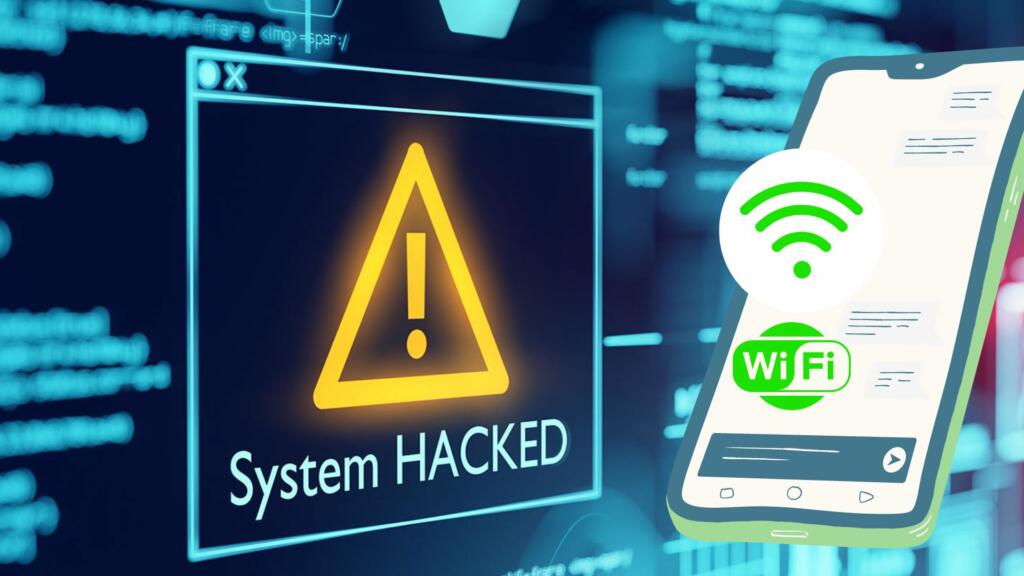The convenience of public Wi-Fi is undeniable, offering instant connectivity in cafes, airports, and hotels. However, recent demonstrations by ethical hacker Alec Daniels shed light on the underbelly of this seemingly convenient network. By taking control of a local coffee shop’s Wi-Fi hotspot in less than 17 minutes, Daniels exposed the vulnerability of public networks to cyber threats. His actions serve as a wake-up call for consumers, urging them to reconsider their digital security practices. As society becomes increasingly reliant on digital connectivity for financial transactions and remote work, understanding the risks associated with public Wi-Fi is paramount.
The Growing Concern
The findings of a 2022 survey underscore the pervasive use of public Wi-Fi for critical tasks, with nearly half of Americans regularly engaging in financial transactions and remote work over such networks. Despite the prevalence of usage, the inherent vulnerabilities of public Wi-Fi expose users to a plethora of cybersecurity threats.
From identity theft to ransomware attacks, the consequences of security breaches on unsecured networks are far-reaching, impacting individuals and organizations alike. The widespread adoption of public Wi-Fi underscores the urgent need to address its vulnerabilities and fortify digital security measures.
The Risks
Hackers employ various tactics to exploit the lax security of public Wi-Fi networks, ranging from “evil twin” attacks to session hijacking. These tactics allow cybercriminals to intercept data, steal sensitive information, and compromise online accounts.
The consequences of such breaches extend beyond financial loss, posing significant risks to personal and organizational security. Understanding the modus operandi of cybercriminals is crucial in fortifying defenses against evolving threats on public Wi-Fi networks. By recognizing the risks and vulnerabilities inherent in these networks, users can adopt proactive measures to mitigate potential security breaches.
Also Read: Apple Users on High Alert with “Threat Notification” and CERT-In’s Probe
The Role of Encryption and VPNs
Encryption serves as a powerful defense mechanism against data interception and unauthorized access on public Wi-Fi networks. By encoding data in transit, encryption prevents cybercriminals from deciphering sensitive information transmitted over insecure connections.
Additionally, virtual private networks (VPNs) offer an added layer of protection by tunneling users’ internet traffic through secure servers, thereby masking their online activities from potential eavesdroppers. Implementing encryption and VPNs is essential in safeguarding sensitive information and preserving privacy on public Wi-Fi networks. By leveraging these technologies, users can mitigate the risks associated with unsecured connections and enhance their digital security posture.
Navigating Public Wi-Fi Safely
Proactive measures such as VPN usage, malware protection, and password management are essential in navigating public Wi-Fi networks safely. By encrypting internet traffic and securing sensitive information, users can mitigate the risks of data interception and unauthorized access.
Furthermore, exercising caution while accessing sensitive information and scrutinizing network authenticity are vital steps in fortifying one’s cybersecurity posture. Educating users about best practices for safe Wi-Fi usage and empowering them with the tools to protect their digital assets is imperative in combating cyber threats on public networks. By adopting a proactive approach to cybersecurity, individuals can minimize the risk of falling victim to malicious activities on public Wi-Fi networks and safeguard their personal and sensitive information effectively.
Dispelling Misconceptions
The misconception that the presence of “HTTPS” in a web address guarantees safety underscores the importance of educating users about cybersecurity best practices. While HTTPS encrypts data transmitted between a user’s browser and the website server, it does not guarantee the legitimacy or security of the website itself.
Cybercriminals often exploit encryption certificates to create deceptive websites and perpetrate phishing attacks. Therefore, users must exercise caution and employ additional security measures, such as verifying website authenticity and using reputable antivirus software, to protect themselves from online threats. By dispelling misconceptions and promoting cybersecurity awareness, users can make informed decisions and navigate the digital landscape safely.
In an era defined by digital connectivity, securing personal and sensitive information on public Wi-Fi networks is paramount. Ethical hacker Alec Daniels’ demonstration serves as a stark reminder of the vulnerabilities inherent in public networks and underscores the importance of proactive cybersecurity measures. By understanding the risks, leveraging encryption and VPNs, and adopting best practices for safe Wi-Fi usage, individuals can mitigate the threat of cyber attacks and protect their digital assets effectively. As society continues to embrace digitalization, prioritizing cybersecurity is essential in safeguarding personal privacy and preserving online security. Through collective vigilance and informed decision-making, users can navigate the digital landscape with confidence and resilience, ensuring a safe and secure online experience.
Also Read: Meta’s Pledge to Combat Misinformation Ahead of India’s General Elections
